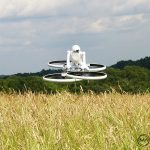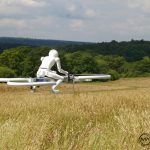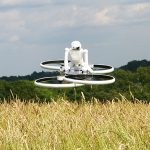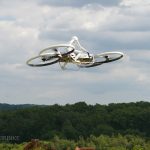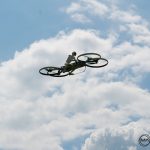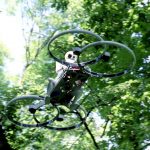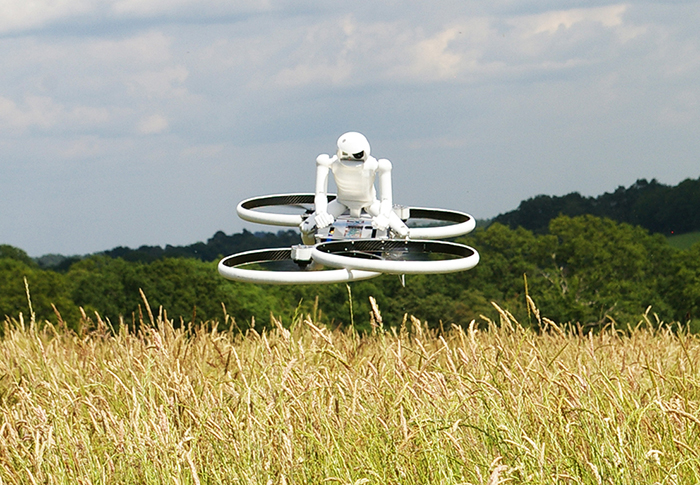
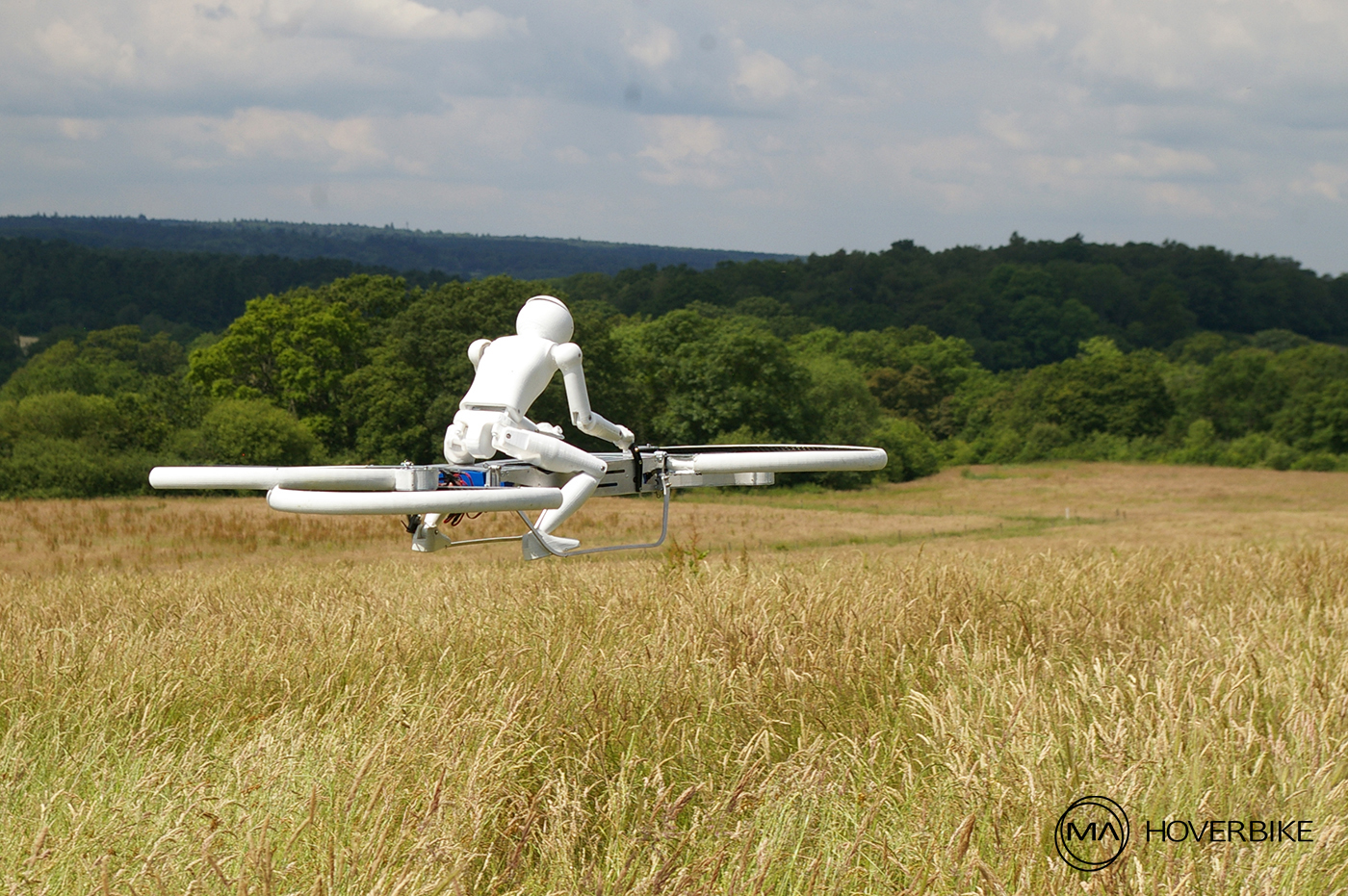
In Back to the Future 2, Marty McFly time travels to the year 2015 to save his future children from a lifetime of disastrous events. The film is full of slapstick humor, intense action and one of the most memorable soundtracks of all time. Anyone that’s seen it will probably tell you it’s one of their favorite movies, and if you were to ask them what their favorite part is, they’ll undoubtedly say the same thing: “the hoverboard.”
The popularity of skateboarding was at an all-time high when the movie was released in 1989, and seeing Marty ride a floating skateboard seemed like a dream come true for skaters. And while there’s been rumors (and even hoaxes) of a real hoverboard coming to fruition, it’s doubtful that we’ll get to ride one by the film’s projected date of October 21, 2015. However, we may be riding the next best thing.
Malloy Aeronautics (MA), the brainchild of UK-based engineer Chris Malloy, is currently in the developmental stages of the Hoverbike – a drone that can be ridden and that combines the freedom of a helicopter with the simplicity of a motorcycle. If the prototype proves to be successful, riders of the Hoverbike will be able to fly and maneuver it in mid-air exactly like a quadcopter, but at considerably lower aerial levels.
“When compared with a helicopter, the Hoverbike is cheaper, more rugged and easier to use – and represents a whole new way to fly. The Hoverbike flies like a quadcopter, and can be flown unmanned or manned, while being a safe – low level aerial workhorse with low on-going maintenance.”
–Malloy Aeronautics
According to MA, the Hoverbike is “the result of years’ worth of research and development” and is currently in the final construction stages of the latest manned prototype. Flight testing is set to commence in a few months and if everything goes according to plan, a final engineering prototype will be submitted to the aviation certification authorities. Once approved and deemed safe, the Hoverbike will go into full production and function as the world’s first flying motorcycle.
The Hoverbike is designed to do everything a helicopter does, but at a much lower cost. MA has suggested it could potentially be used for cattle mustering, aerial surveying and power-line inspection. It’s not intended to be a recreational form of personal transportation (yet), but will instead be a practical aircraft for anyone that needs to transport it. Because the Hoverbike can be folded to a third of its size and palletized, it could also be the ideal solution for ski and mountain rescue, airborne logistics and insertion/extraction during major disasters.
Engineering and manufacturing such a machine is expensive, and, for this reason, MA is the latest company to turn to Kickstarter to fund their idea. In order to entice people into donating money, MA is offering a scaled down version (1/3 the actual size) of the Hoverbike for about $1,000 USD. People won’t be able to ride the scaled Hoverbike, but it does offer a lot of the same features as the prototype and even comes with a 3DR Pixhawk flight controller that can be programmed for setting pre-determined flight paths.
Specifications
- Weight: 4.9lb
- Dimensions: 45.5in. (L) x 6.3in. (H) x 23.3in. (W)
- Construction: Carbon composite, aircraft-grade aluminum, polyurethane
- Gross Lifting Capacity: 15.4lb max (10.4lb recommended)
- Payload: 10.6lb max (3.3lb recommended)
- Max Flight Speed: 45mph
- Max Height: Limited to radio range and local air rules
- Battery Voltage: (6S LiPo)
- Flight Time: See graph
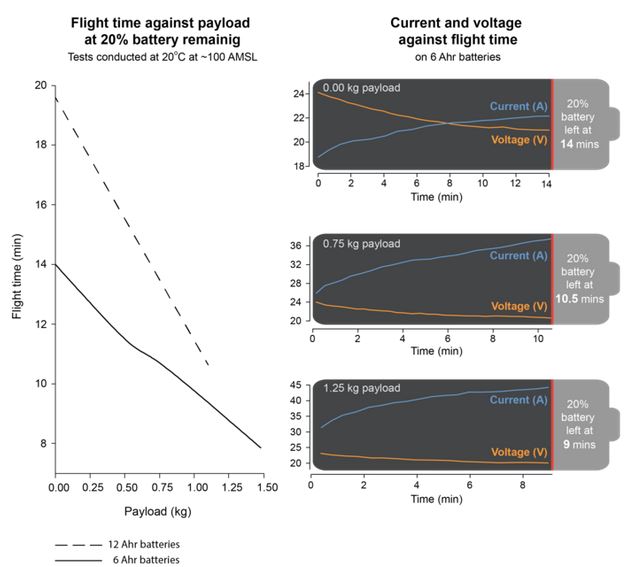
Perhaps the best feature of the scaled Hoverbike drone has nothing to do with flying, but with robotics. MA has designed an Arduino-compatible microcontroller called the MAcro Micro to power the drone’s multi-colored LED’s that will also allow owners to get creative. Programming the MAcro Micro to switch and actuate levers, release pins or control spotlights are just some of the hundreds of functions that an imaginative pilot can use the microcontroller for. Programming the drone is as easy as connecting the MAcro Micro to your computer via a micro USB cable and it is compatible with the standard Arduino software.
Until now, drones haven’t been very versatile. With the exception of few people, most pilots fly them for leisure. MA’s Hoverbike drone will change all of that. People’s notions of what a drone is capable of will not only change, but will set the tone for what we can expect when the actual Hoverbike arrives. And while it won’t be available by 2015 like Marty’s self-lacing Nike’s, the Hoverbike could be the first step to the Hoverboard we’ve all been waiting for.
What will you use your Hoverbike for?

